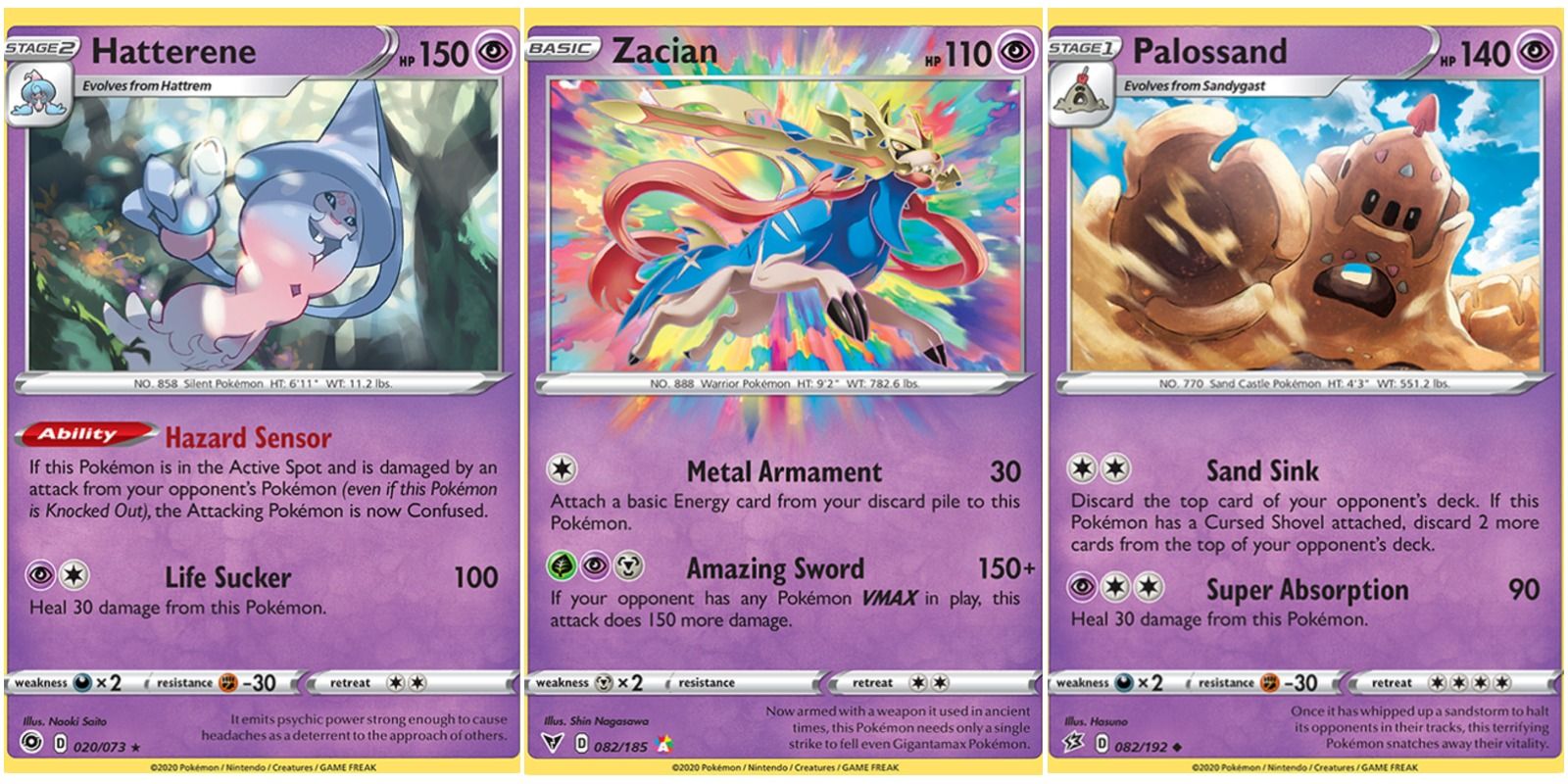
With every generation of the main series Pokemon video games, the Pokemon TCG also gets updated with new cards pertaining to the newly revealed pocket monsters as well as other novel aspects of the video game franchise. One of the most frequent changes and updates happens to the TCG's types, which differ from the game types by being multiple elements that get grouped together. The Psychic-type is the one that has arguably dealt with the most changes. Between the Diamond & Pearl set and the Sword & Shield set, the TCG Psychic-type housed most Psychic, Ghost, and Poison-types from the games, though after the Sword & Shield set, Poison-types were relocated to fit into the Darkness-type of the TCG. Furthermore, starting in this same set, Fairy-types lost their own element and were grouped into the TCG's Psychic-type, which presently is primarily composed of three types: Psychic, Ghost, and Fairy.
RELATED: Pokemon: 10 Beginner Tips If You're Just Starting The Card Game
With all these changes, it could be difficult to understand how to best implement pokemon from this type in the TCG as well as challenging to make a deck or form a strategy. Thankfully, the newest sets have a common theme between many Psychic-type pokemon cards. Strategies that can be found among many modern Psychic cards are the ability to manipulate damage counters, inflict predominantly two types of status conditions, healing themselves while dealing out damage, and even having some counters to the mighty VMAX cards that have been introduced recently. Using one or more of these tactics can allow a trainer to make the most out of this type's strongest aspects.
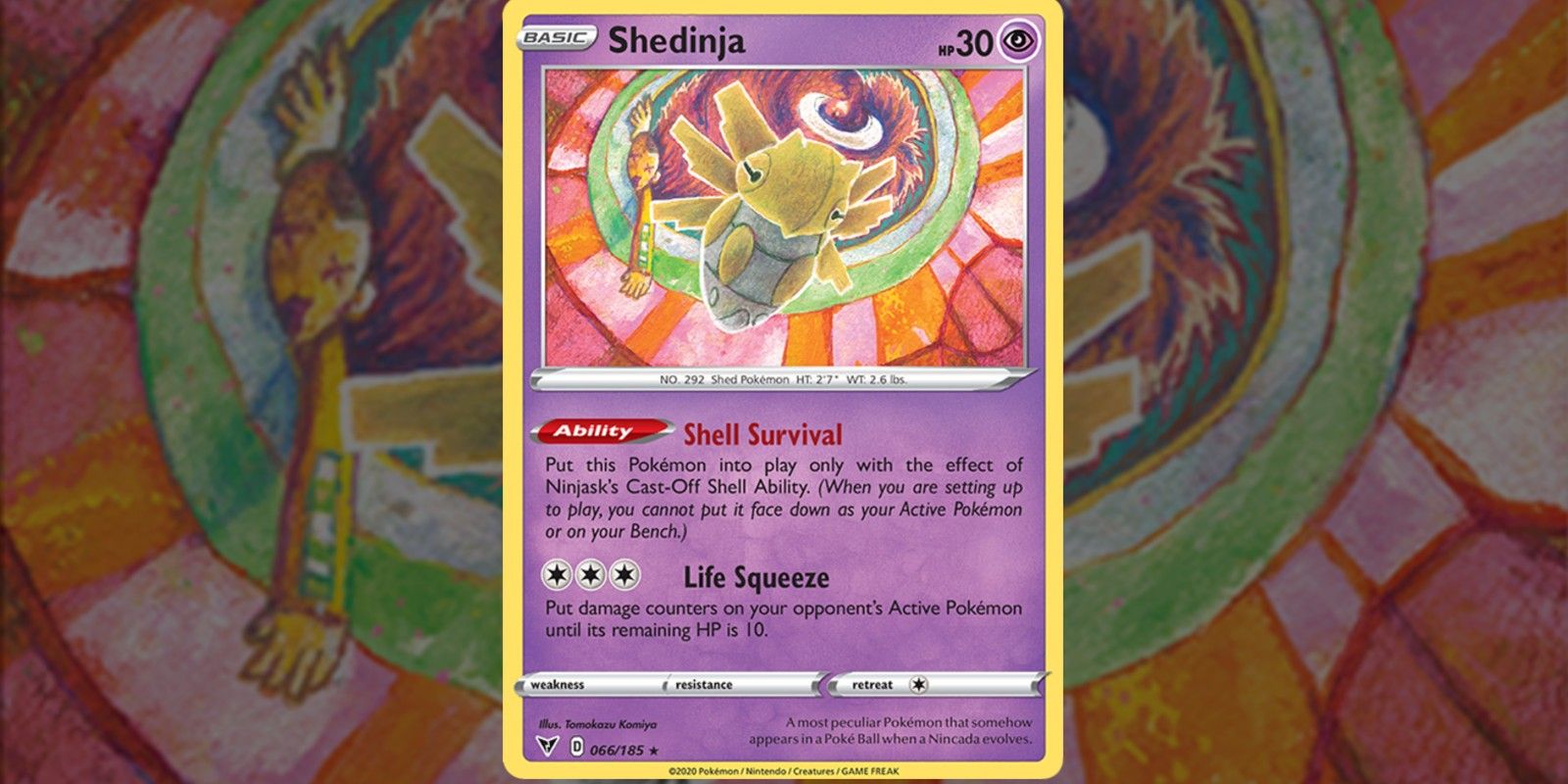
Ghost-type pokemon are known for being creepy and dangerous. This is a trait they maintain, even being part of the Psychic-type in the TCG. One thing that makes them so difficult to counter is their ability to do major damage to opposing pokemon without needing to unleash attacks that do so directly.
RELATED: Pokemon: The 10 Scariest Ghost Pokemon, Ranked
An ideal example of this is the Shedinja card from the Vivid Voltage set. Their Life Squeeze move is capable of decimating any adversary in the opponent's Active Pokemon slot upon the field of battle, leaving them with only 10 HP. Despite being a bit tricky to get Shedinja into play, this attack can be an excellent counter against any threat.
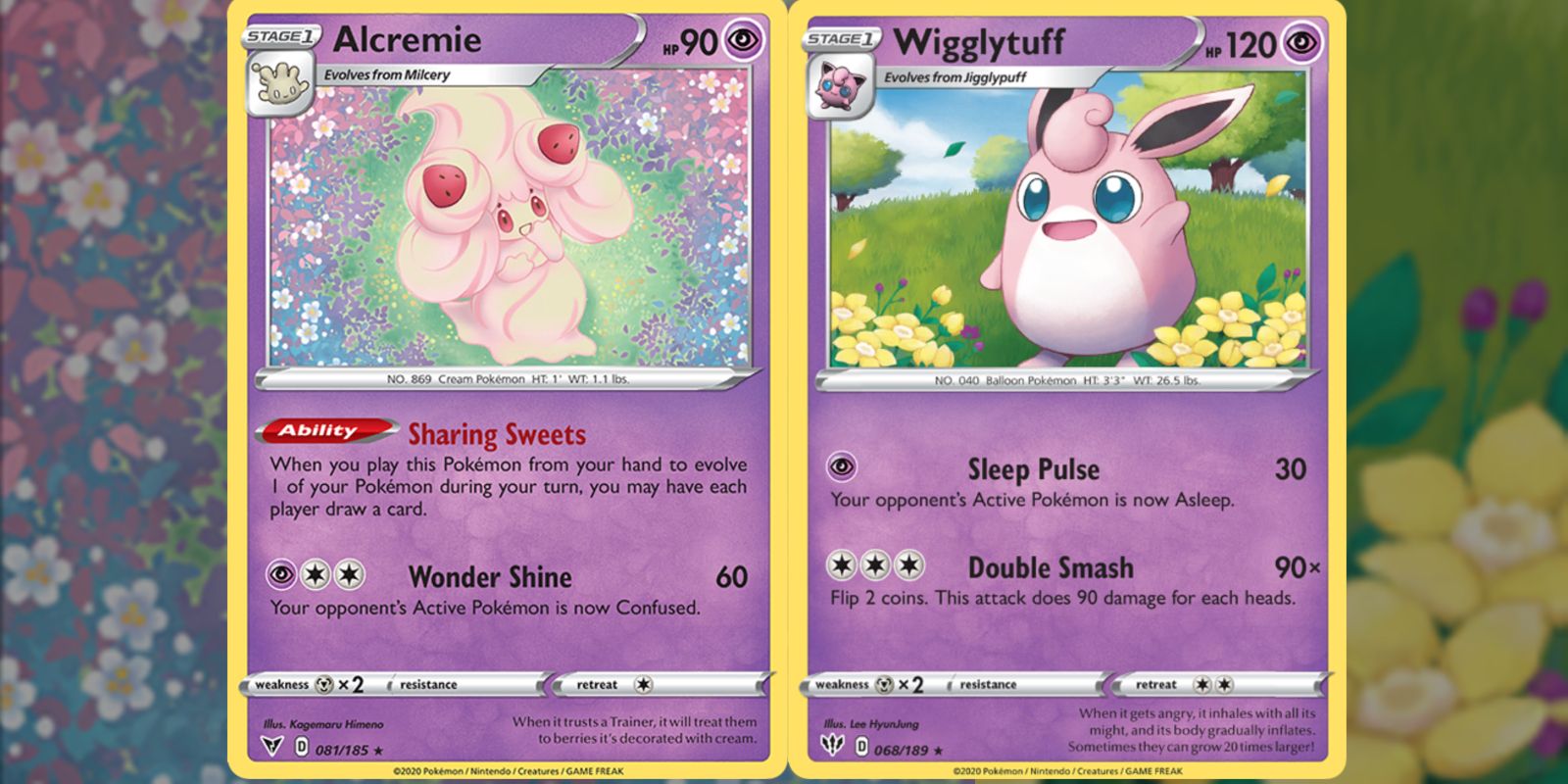
Of all the different status conditions in the TCG, Psychic-types usually focus on inflicting either Confused or Asleep. Alcremie from the Vivid Voltage set has a damage-dealing move called Wonder Shine that is guaranteed to inflict confusion upon the active foe, which forces their trainer to flip a coin when they attack and risks taking 30 damage from a flip resulting in a tails outcome. This is a great way to make the enemy hurt themselves or make them scared enough of doing so that they will simply not attack. The only ways to relieve a pokemon of the Confused status is to retreat it or use a Trainer card to heal them.
RELATED: 10 Underrated Psychic Pokemon (That Are Actually Very Strong)
The Asleep condition is not as initially hurtful, though can still very much debilitate an adversary's Active Pokemon by rendering them unable to make attacks or retreat. Wigglytuff from the Darkness Ablaze set has a very efficient attack called Sleep Pulse that deals a bit of damage and is guaranteed to put the foe to sleep for the cost of a single Psychic energy. While the opposing pokemon is sleeping, Wigglytuff can do a ton of damage to them with impunity by using their other move, Double Smash. The only ways for a foe to wake their pokemon up is to get heads on the sleep check coin flip during their turn or to heal them with a Trainer card.
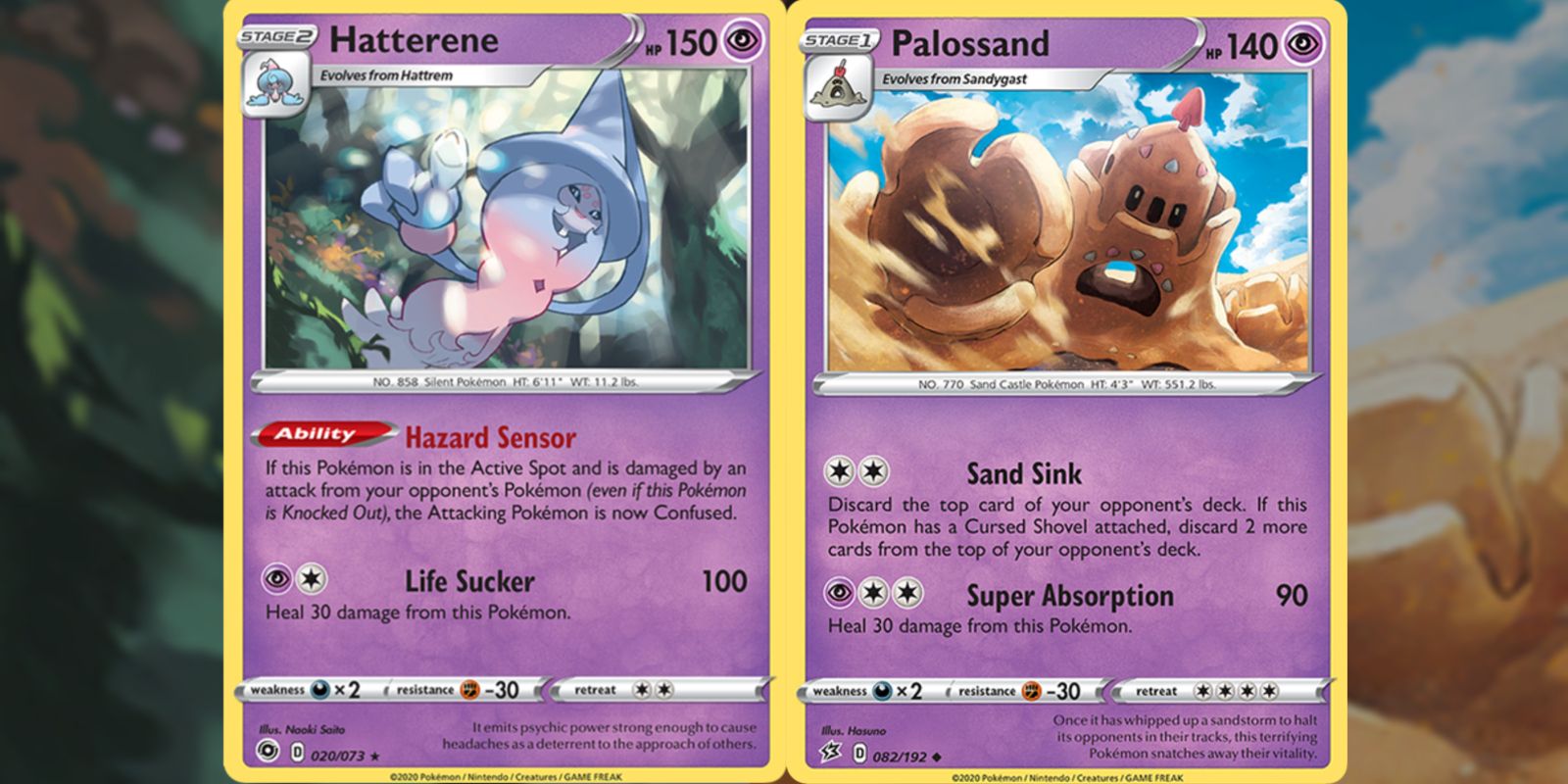
There are also a number of Psychic pokemon cards that can heal naturally from the secondary effects of their moves, removing the need to use Trainer cards on them to recover HP. Hatterene from the Champion's Path set has the aptly named move, Life Sucker, which, as one would expect, leeches HP from a foe while also dealing a decent amount of damage. This, in combination with Hatterene's Ability, Hazard Sensor, can make them a very tricky pocket monster to deal with for opponents who tend to attack directly.
RELATED: Pokemon: The 15 Best Psychic Moves, Ranked
Another great example of this effect can be found on Palossand from the Rebel Clash set. Their Super Absorption move does pretty much the same thing as Hatterene's Life Sucker, though deals 10 less damage and requires one more energy to use. This recovery of health lets Palossand potentially deal even more damage, though to the enemy's deck instead of their Active pokemon. Being active longer allows Palossand to use its Sand Sink move to dump cards from the opposing trainer's deck into their discard pile, potentially ridding them of powerful pokemon or other cards integral to their strategies. Furthermore, if the battle is running long and the opponent is low on cards, this can force them to run out and cause them to lose on a technicality.
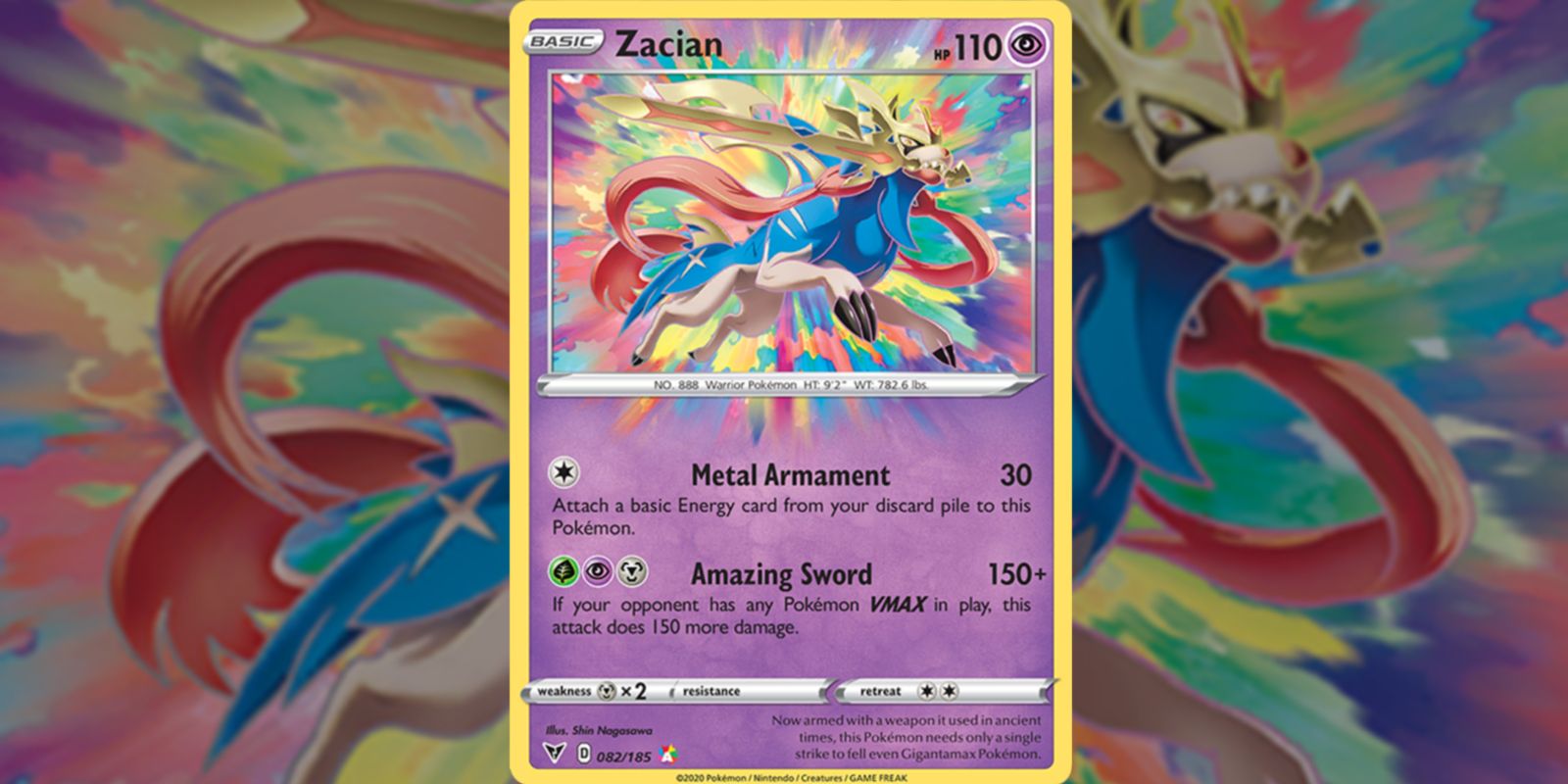
The Psychic-type in the TCG also houses a mighty Zacian card. There have been many powerhouse cards introduced over the years, including Pokemon EX and Pokemon GX cards, though the newest addition to the mighty card variants are the VMAX cards. Due to the natural progression of card games, sometimes referred to as a "power creep", certain card variants can dominate gameplay and result in stagnant and predictable strategies.
Thankfully, there are cards introduced that are meant to balance this aspect out. Zacian from the Vivid Voltage set comes with a move meant to devastate VMAX pokemon appropriately known as Amazing Sword. In addition to its 150 base damage, it does another 150 on top of this to VMAX targets, which can possibly one-shot many of them. It may take three different kinds of energy, however, Zacian's Metal Armament move allows this to be a bit easier to pull off by attaching energy cards from the discard pile to them.

